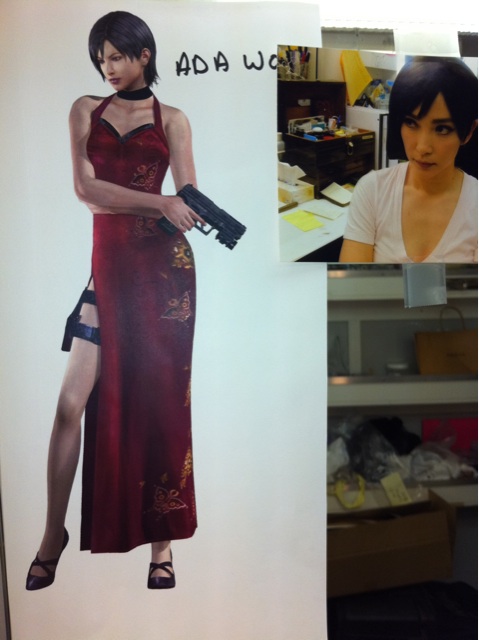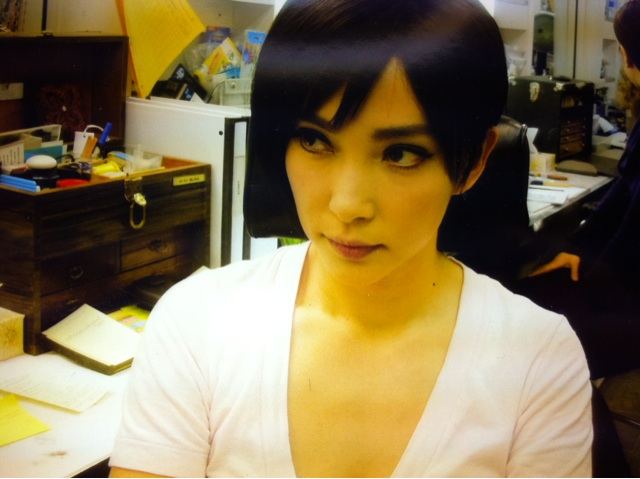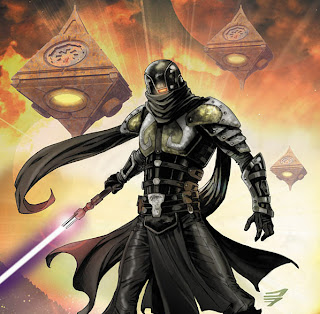It is official,
DC Comics will relaunch the majority of its publishing line this September
with a wave of new #1 issues starting with "Justice League" by Geoff Johns and Jim Lee. The news comes on the heels of weeks of rumors and speculation about the fate of the DC Universe line and draws even more questions about what else may lay around the bend.
After speaking with multiple sources throughout the industry on the condition of anonymity, CBR News has learned some of the salient details of DC's September roster, starting with the perhaps telling news that the publisher plans to launch a full 52 monthly titles with #1 issues across the month with 13 new titles shipping each week. The number holds some significance for longtime DC readers as 52 is the number of parallel earths making up DC's multiverse, and CBR has confirmed that the #1 launches will be accompanied by a major reboot of continuity with many pieces of DC's current status quo being rewritten and undone including character relationships and even the existence of some cast members.
Included in the 52 series will be:
- A new title starring Superman written by Grant Morrison.
- Birds of Prey #1 - This new ongoing series will not feature the work of longtime "BoP" writer Gail Simone. In fact, many tried and true approaches to books will be getting a second look at DC in September.
- Teen Titans #1 - The new start for the teen team will be written by "Red Robin" scribe Fabian Nicieza. UPDATE: Nicieza has come out publicly saying he is not writing the Titans, however the other consistent word CBR News has heard is that writer Scott Lobdell will be involved with the franchise. Either way, expect to see many old friends from DC Editor-in-Chief Bob Harras' Marvel days working on DC's new books.
- Justice Society of America #1 - Only one of a number of current titles that will welcome a creative team shift, the future of the original superhero team will apparently not involve current writer Marc Guggenheim.
- Wonder Woman #1 - Don't expect the recent changes from writer J. Michael Straczynski to stick when the Amazing Amazon sees another new #1 hit.
- Green Lantern #1 - Even with a new #1, Green Lantern remains in Johns' hands, and readers can expect the effects of major crossovers like "Blackest Night" to stay in place moving forward.
- Hawkman #1 - While fans have known a "Hawkman" series by James Robinson has been in the works since the writer mentioned it on a panel at New York Comic Con, Bleeding Cool's Rich Johnston has been reporting the rumor that the book will be drawn by "Batman & Robin" and "Outsiders" artist Philip Tan.
- Aquaman #1 - No surprises here. The already announced series featuring the sea king by Johns and Ivan Reis will be part of the relaunch wave.
The other seismic shakeup that remains unconfirmed is whether long-standing titles "Action Comics" and "Detective Comics" would also renumber with brand new first issues. However, at this time, CBR has found no confirmation one way or the other on the fate of those titles. DC Comics offered no comment on the above information.
What has been said by many sources is that a number of the new titles will feature new characters or characters now serving in non-traditional roles. However, the total number of titles changed or launched new shouldn't shift the overall output of DC's line too much as CBR sales analyst John Mayo explained, "By my count, there were 59 DC Universe titles in the June solicitations, not counting the DC Retroactive titles, 'DC Universe Online Legends' or 'Doc Savage' and 'The Spirit.' Subtracting out titles with more than one issue in June reduces the number by three leaving 56 titles in the DC Universe.
"52 new #1s is close enough to not make a huge difference. To me, this is the normal fluctuation of the number of titles from month to month."
Of course, while all the changes will doubtlessly stir discussion and debate within fan communities, a more practical question remains: will it work? The comics market has been extremely soft in the past few years of the Great Recession, and there is little precedence to compare such a line-wide relaunch to.
[
UPDATE: John Jackson Miller wrote to clarify some of his numbers crunching, and
has posted his full analysis on his blog. The story below has been edited to meet these corrections.]
"If they are doing something where they're shaking up continuity and starting over from there, that has been shown to have an effect [n sales]," said comics sales historian John Jackson Miller of
Comichron.com. Miller spoke with CBR News before official word of the new #1s came out. "If you want to go back to 'Crisis On Infinite Earths,' we did see some attention coming to titles that hadn't had it before. Although, some of that attention did not come from 'Crisis.' We talk about a big renumbering there, but like with 'Superman' going back to #1 – that didn't happen because of 'Crisis.' That happened because John Byrne had done 'Man of Steel.' That's a completely separate reboot. Did Superman sales improve? Yeah they did, but would they have improved that much if John had just taken over existing Superman continuity and not rebooted the series? That's a question we'll never have an answer to.
"If we're talking about a full-scale continuity reboot, then we're getting into the territory of 'Heroes Reborn'...those numbers improved dramatically on the first issues and then began to tail off, while still remaining higher than they had been before. There are some reasons behind why it tailed off, which also get into the element of not just continuity but also renumbering, but it was a pure reboot in the sense that those characters left their previous existence. It's different than something like the Ultimate Universe, which was a reboot that ran concurrent with the regular Marvel Universe."
Of course, the comics market is in a different place today than it was in 1996 when Lee last took a role in rebuilding a major superhero franchise wholesale with "Heroes Reborn," and although there will be some similarities, the new DC relaunch is both a vastly different beast in terms of sheer comics and in terms of the in-story continuity elements at play. Retailer Mike Malve, owner of Arizona's
Atomic Comics chain, explained before the news broke that for his part "I applaud them if they do do #1s. And everybody is going to be against me saying this, but I applaud them because as a business, they're hurting so bad – as we all are. Look at the numbers. They're selling 40,000 or 60,000 of a book that three years ago was at 80,000. These days, they're not hitting those numbers, and we're not gaining a lot of new customers right now. We're trying to hold on to what we've got.
"I think this is a good thing for the industry. I just hope that if they do this, they should have an advertising plan and a marketing plan to get new readers and not just expect us to do it," Malve added. "I want these stories to be friendly for new readers, because that's one of the things I felt about the Point-1 initiative at Marvel. I didn't think those stories were new reader-friendly at all."
Malve did say that downsides exist to such an aggressive publishing change at the retail level, saying "If they're all coming out at once, it would hurt the books. You'd have to order certain books a little less than 'Batman' or 'Superman.' But if they do it right, they'd tier it over a couple of months, which is what I'm hoping they'd do. They should launch with their three big ones – Superman, Batman and Wonder Woman – in that first month, and then do their other books after. I don't know. DC hasn't released anything yet, so we don't know. But it would hurt if they all came at once because [new readers] would all come in that one week or that one month, and then we'd never see them again.
"'Flashpoint' has a lot of people talking. The alternate reality things have always done well in comics," he noted of the current impact of both DC and Marvel's latest "event comics" pushes. "'Fear Itself' did so much more than I thought it would sales-wise. All the tie-ins are doing great so far...Same thing should be happening for 'Flashpoint' coming up. With all these tiles coming out, I think it's just going to grow."
Another major factor in the relaunch will be the reader reaction to renumbering of titles. While launching an older property with a new #1 has been a fashionable publishing move in recent years, the play remains hotly debated online. Recently in his Talk To The Hat column on CBR, Marvel's SVP of Publishing Tom Brevoort
made the argument that despite some fan outcry, #1s do draw more new readers to comics. However, Miller explained that those numbers may skew quite a bit over time.
"Retailers ordered almost twice as many 'Fantastic Four' Vol. 3 #1s," the sales analyst explained again using
"Heroes Return" as a comparison point. "And that was great. But what happened is that by the time you got down to issue #3 or 4, you had sales back down to what they were beforehand. The group of people that came in to buy the extra copies of the new issue #1 is to some degree collectors who just want that #1 and then to a second degree the new issue grazers. How many of those grazers come in depend on who the talent is and what the promotion is. And the downside there is that every jumping on point is a jumping off point...One of the risks you run when you do a reboot of long-running series with a new #1, yeah you're going to get a boost. But the slide that follows that is going to be a much steeper one than you had beforehand. How steep it is depends on how much brand loyalty there is for that title – how many people are willing to say, 'I will stick with Batman no matter what the number is.'
"The problem is, I think people realize that it doesn't so much matter what the number is. The new issue #1 gets you that boost when it comes out, and that's great. But there are a couple of things I think we've seen with that. The things that make a new issue #1 sell well with the person on the street work just as well in the ongoing series. Exhibit A of this is Jim Lee on 'Batman.' They could have started his run as 'Batman: Hush' #1, and it would have done great. But they put it in as 'Batman' #608, and retailers who were already ordering 'Batman' every month looked at Jim Lee, and the sales ended up being much higher. The highest issue was #611 which came after retailers caught on. And what happened when it ended? Jim Lee went away, and 'Batman' sales on the regular series stayed much higher than they were before. There was a lingering effect that stayed there."
Whether or not DC's gamble will pay off in the long terms depends on many factors – not the least of which is critical reception to the creative efforts put forth by the writers and artists behind their new line. Malve for one has faith that at least DC's first new book will be able to carry that burden well. "I had people come in for the death of the Human Torch that aren't regular comic book fans that are coming in still," he said. "If anybody can do something like that, Geoff Johns can."










